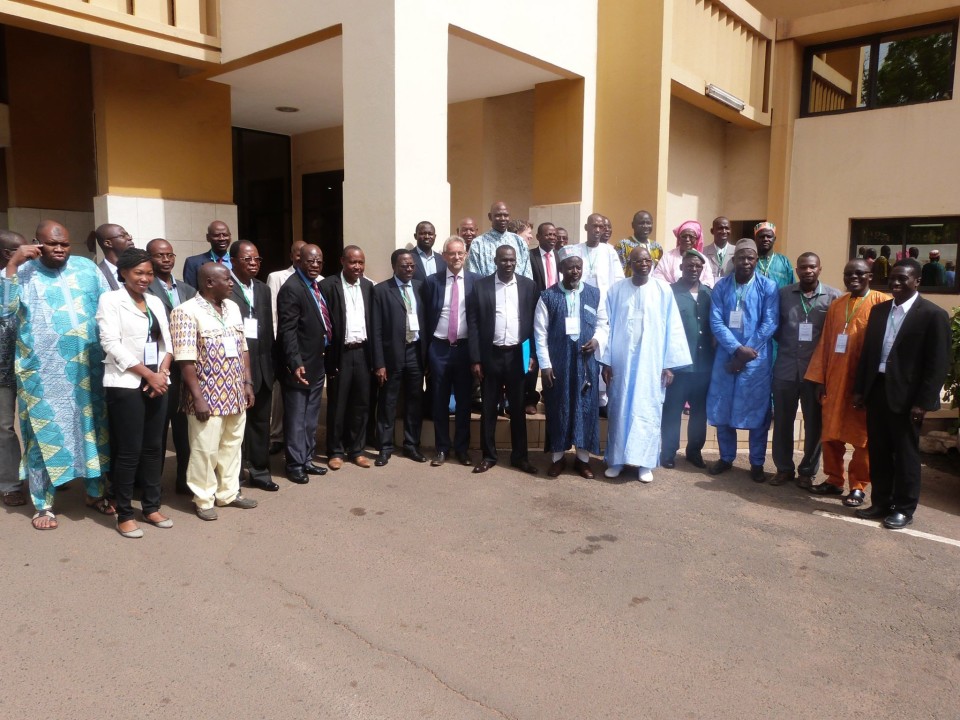
An environmental flow for the Inner Niger Delta
-
Community resilience
The Inner Niger Delta in Mali is a great green oasis on the edge of the Sahara desert. The region of seasonal wetlands is not only an important hotspot for up to four million waterbirds, but it also makes a critical contribution to national food production. A major threat is the construction of upstream dams and irrigation that threatens to reduce the amount of water coming downstream. How can we ensure that new upstream developments sustain existing ecosystems and related livelihoods? An international conference on environmental flows 7-10 June explored these issues.

Environmental flows provide a picture of the quantity, quality and timing of water required to sustain ecosystems and the human well-being that depends on them. In short, they enable the water needs of wetlands and wetland-dependent communities and businesses to be taken into account in water allocation and management.
The conference brought together scientists, engineers, policy makers and NGOs from different countries to exchange knowledge and experience on the issue. The aim was to start a process for identifying an environmental flow for the Inner Niger Delta in Mali. The Malian Ministry of Energy and Water welcomed the initiative and pledged its support.
What’s at stake in Mali?
Central to the productivity of the Inner Niger Delta is its annual flood pulse, driven by rains hundreds of kilometres upstream in the Guinean highlands. 30% of Mali’s rice production, 80% of fish production and 60% of its cattle come from the Inner Niger Delta.
Mali desperately needs more food, water and energy. New infrastructure can help meet these needs. However, when dams and irrigation projects are poorly designed and managed, they can also threaten livelihoods and undermine food production. Current water management in the Upper Niger recognises minimum flows but not the need for the flood pulse in supporting a healthy downstream ecosystem.
Robert Dessouassi of the Niger Basin Authority highlighted some of the major challenges for the Basin, such as the need for sustainable, equitable and peaceful use of water resources next to the need for economic development and regional integration. Extending the amount of irrigated agriculture upstream is high on the agenda of the Malian government. Their ambitions require more water to be diverted from the river and can only be met through the construction of the Fomi dam in Guinea to ensure a year-round supply of water.
While on the one hand Mr. Dessouassi acknowledged environmental problems like deforestation and the need to maintain natural resources like pasture for grazing-, he also pointed at the huge hydro-agricultural potential of the Niger river. He underlined the need for irrigation to increase agricultural production and said: “We need energy, we need to construct dams!” This apparent conundrum – conflicting needs for water in a region of water scarcity – is where an environmental flow can help to anchor water dialogue around sustainable solutions.
Moving ahead with environmental flows
The big question is if it is possible to design and operate Fomi in such a way that it will generate an environmental flow for the Inner Niger Delta. A common thread that emerged during the conference was the need for public involvement from the start.
Ousmane Seidou (University of Ottawa, Canada) recommended that for the Inner Niger Delta we adopt an environmental flow methodology that is cutting edge whilst making pragmatic decisions related to data availability and time frame. We already have loads of data that we can start with, with respect to hydrology, environment and people living in the delta. Given the imminent water management decisions on upstream dams and irrigation in the coming years, a method that delivers in time for infrastructure decision-making is critically important.
As we look ahead, it is great to see that there is already so much knowledge and engagement on environmental flows. Participants gave Wetlands International Mali a clear mandate to drive the process for developing an environmental flow for the Inner Niger Delta. We will work with partners to carry out the analysis and involve stakeholders throughout the process. This will set the stage for a follow-up technical meeting later this year.
